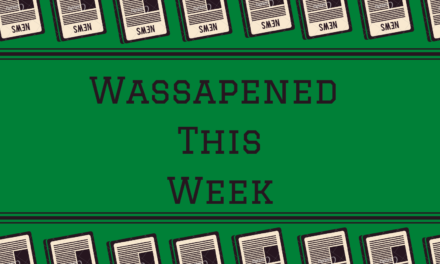Misogyny is inescapable. The insidious prejudice manifests itself within one of the most liberating artistic mediums, where creativity knows no bounds. It is a disheartening truth that bias still finds its way into music.
A study conducted in 2019 found that women tend to have a more consistent and creative output than their male counterparts within female-dominated genres. However, researchers have suggested these results to be related to social limitations rather than inherent skill. Constraints such as gender-based bias encourage hyper-negative feedback toward female performers.
Like in most disciplines, women within the industry, on average, receive more negative feedback than men and have to work significantly harder to obtain their proper dues. “There are different expectations for women in anything. Women have to be the best and then some,” says Grammy award-winning artist Megan Thee Stallion in an interview with Vulture. She also stated that “A man can get on a track and literally make two noises and be the GOAT. When you listen to a girl rap, she gotta have all the bars, all the flows, be melodic, she gotta look good.”
In a survey taken by MIDiA Research, of 401 women within the music industry, 77% of survey takers feel that female artists do not have the same opportunities as their male counterparts. Additionally, roughly 80% agree that it is more difficult for female artists to get recognition for their work. Therefore, though they may work significantly harder, it continues to be difficult for women within the industry to make progress, especially if they do not fit conventional beauty standards.
According to Media Insights and Decisions in Action Research, a UK-based research and analysis company, roughly 83% of women agree that to succeed as an artist, one must reach a standard of beauty. As seen in a large amount of gossip blogs and magazines, appearance plays a large part in how women are treated. While male musicians do get bullied for being conventionally unattractive or unkempt, female artists get harassed and degraded for their appearance to a more substantial extent. People regard appearance to be a much larger part of a woman’s identity. Black and brown artists receive a heavy load of this, as darker skin and features have been seen as undesirable under the Eurocentric standard of beauty. Comments referring to black and brown women as “men” or “savages” among other derogatory terms, are not uncommon in gossip columns and blogs.
Even when appearing aesthetically presentable, female artists continue to be victimized by misogynistic rhetoric formulated to nitpick at irrelevant issues. In many cases, for female artists, the lyrical content of their music never seems to reach the insatiable standards they set for women. Complaints from immature men and women are found at the release of any song created by a female artist. These audiences pounce at the opportunity to scrutinize female lyrical content disproportionately compared to male artists, whom the same individuals often praise for their uninspired lyrics and production.
For women, lighthearted and fun songs, intended to be the backdrop of parties, are criticized for being shallow and lacking vital political commentary. Statements criticizing the “females of this generation” and their sexual expression are rampant. The 2020 release of the Megan Thee Stallion and Cardi B song, WAP, is a prime example of this phenomenon. This innocuous track became controversial over something that musicians had been doing for decades. Conversely, heavily political and intellectually stimulating tracks catch pushback for being too serious and cerebral.
Ironically, misogyny has been found to affect men in the industry negatively. The 2019 research found evidence that men who collaborated with women within their medium had received a boost in originality output. Although the most disrespected demographic, associating and collaborating with female artists actively benefits men. Evidence from both sources supports that networking and collaboration with women has led to a noticeable increase in creative production and support for both male and female artists.
Through analysis, one can easily recognize the ways that misogyny affects and harms every individual it touches. Instead of allowing for an environment conducive to creativity and ingenuity, misogyny only takes away from and stunts the creative potential of male and female musicians. Hopefully, as society, biases will begin to disappear, and the music industry will follow by improving their practices to create a more supportive and empowering work environment for female artists.



